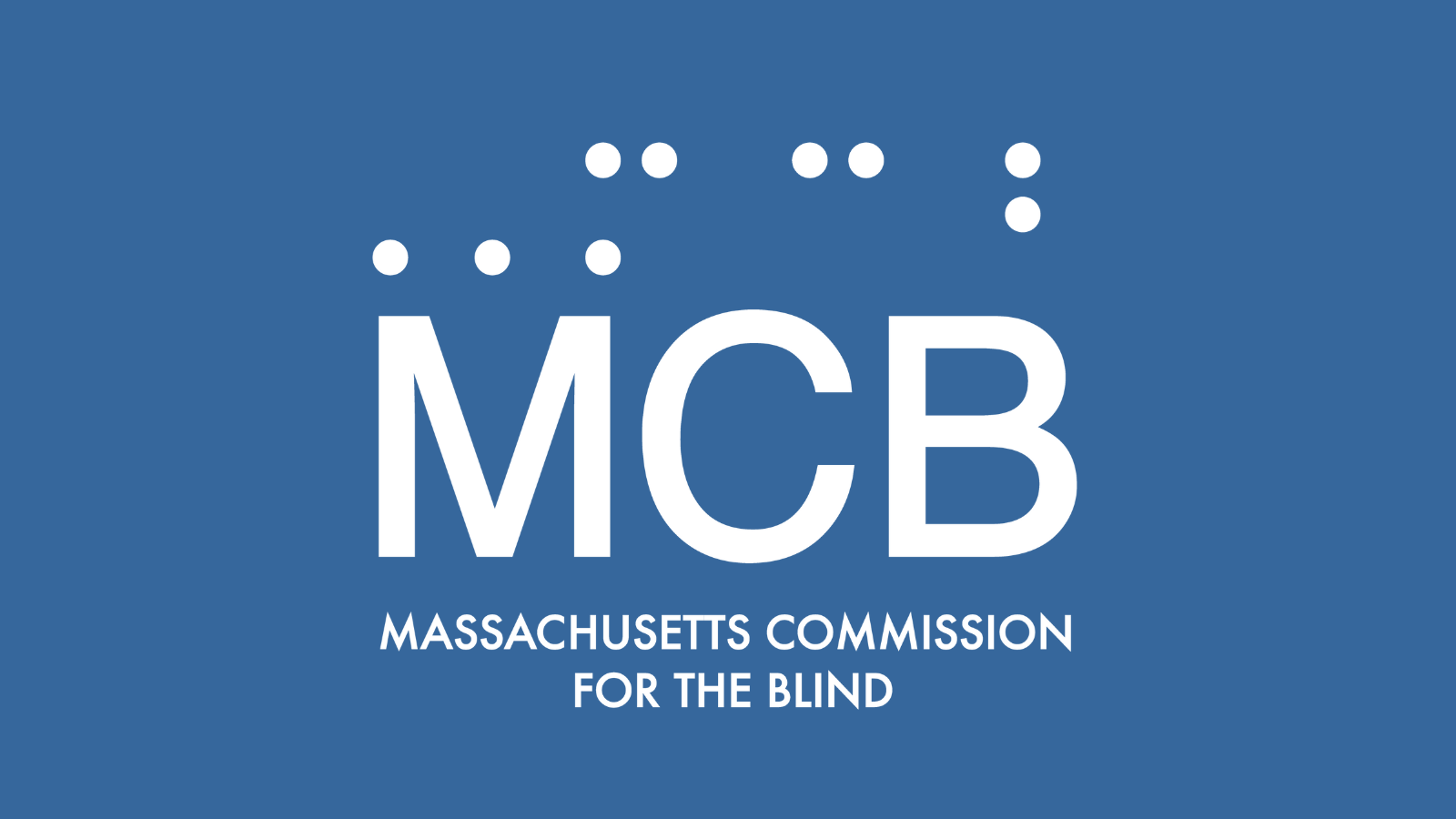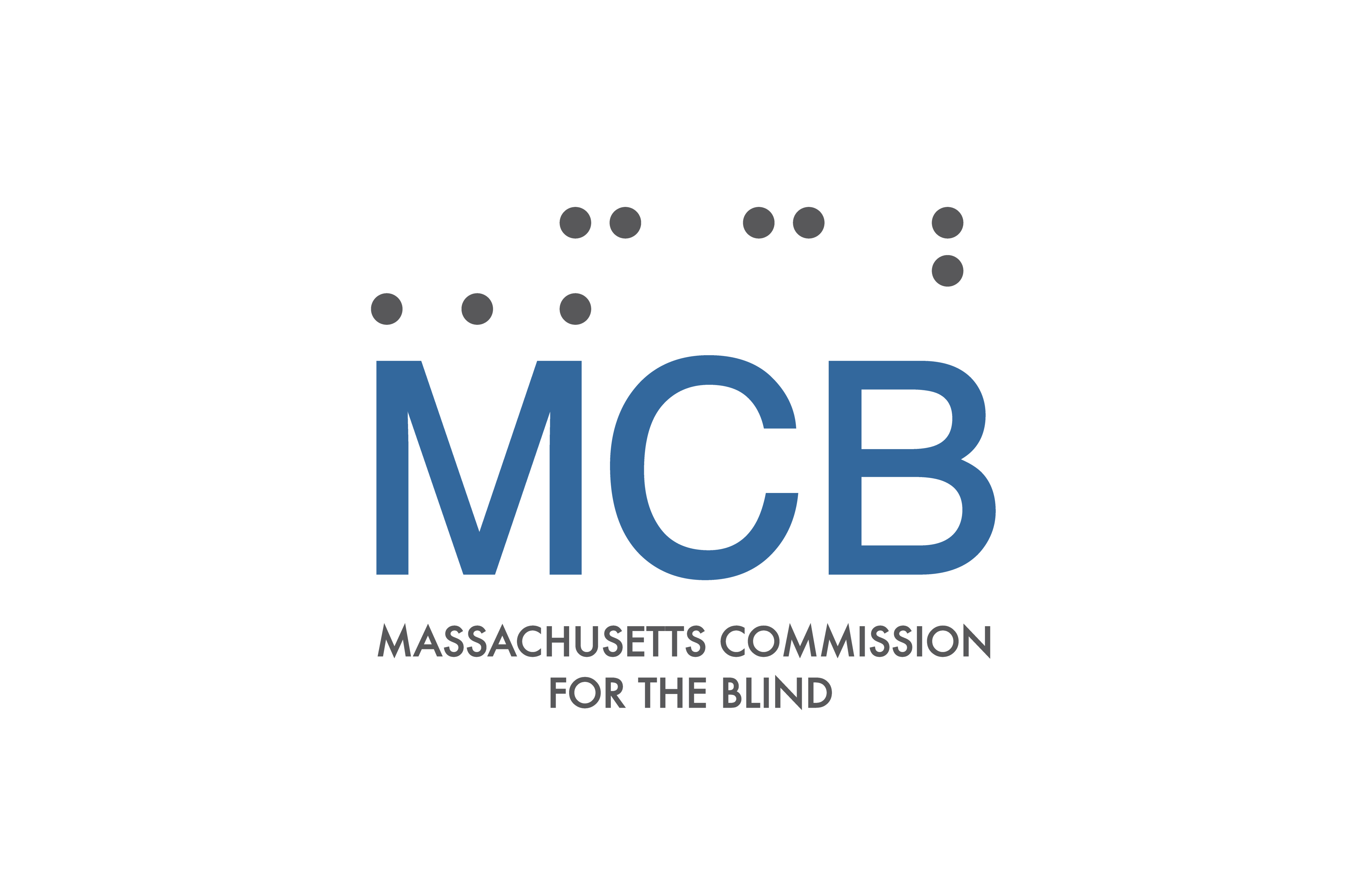- Massachusetts Commission for the Blind

Project Partner
MassINC Polling Group
Objectives
In early 2023, the Massachusetts Commission for the Blind (MCB) contracted with MassINC Polling Group (MPG) to design, conduct, and analyze the responses of a 25-question survey of people ages 18 and older who are registered with the agency. The goal of the survey was to utilize the data to improve and develop programs and services that enhance the independence and community participation of the agency’s consumers.
Key Activities
MCB and MPG worked collaboratively to develop the survey questions which asked the consumers about their visual impairment, satisfaction with services received from the agency, quality of life, and social relationships.
MPG surveyed 3,069 consumers through a variety of methods: email, SMS text message, mail, live telephone inbound and outbound calls, and in person events. Incentives of $20 gift cards were offered to the first 1,000 consumers who completed the survey.
The survey was conducted from April 10, 2023, to June 5, 2024.MPG reached out to a total of 24,364 consumers for an overall response rate of 12.6%.
Outcomes
Ability to See
MCB serves consumers who have a wide range of visual impairments. While many consumers can read regular (9%) or large print (31%) with corrective lenses, the majority report more significant vision loss, including 13% with no vision at all. There are demographic differences, particularly by age. Except for total blindness, significant vision loss is most common among consumers ages 75 and older.
Vision loss is closely related to many measures of well-being. Quality of life, ease of, and satisfaction with social relationships decline as vision loss worsens, except for consumers with no vision (many of whom may have lived with their condition since birth). Consumers with severe vision loss report needing more assistance with everyday activities. This is an important reminder MCB serves consumers with a wide spectrum of visual impairments and the needs of consumers with different levels of vision loss can vary dramatically.
Visual Aid Tools and Resources
Consumers use a wide range of visual aids with more than half using large print or talking materials (52%) and magnifiers (60%). Consumers who are Black, Latino, and Asian American or Pacific Islander are using visual aid tools at lower rates than consumers who are white. Specifically, they are all using magnifiers, sunglasses, and telescopic or prescriptive lenses less frequently, and are more likely to state they use “none of the above.” Consumers with a lower level of education, especially those who have a high school degree or less, are also less likely to use visual aid tools and resources. This presents an opportunity for MCB to reach out to these demographic groups to make sure they have all the visual aid tools and resources they need.
Additionally, in the open-ended question asking about services consumers would like to receive that they are not receiving from MCB, 7% requested a specific product or aid. This is a small share of the total responses but does present an opportunity for MCB to check in more frequently with consumers to ensure they have the tools they need.
Satisfaction with Services
All MCB services provided received high satisfaction rates with most consumers who have received a given service saying they are “very satisfied” with each service except for vocational rehabilitation services (46%). With a few exceptions, satisfaction levels for services are statistically similar across most demographic groups. This suggests MCB services are well received and appreciated by consumers who have received them. There is also evidence the services are making a difference in the lives of consumers. For each service offered, consumers who received the service reported better quality of life and satisfaction with their social relationships compared to those who have not received the service. The fact MCB services are making a difference further highlights the need to make sure services are being offered to all consumers equitably.
The survey does suggest room for improvement. A minority (13%) of consumers surveyed want to work but are not currently working. A majority (54%) of these would-be workers have not received vocational rehabilitation services. Consumers who have received vocational rehabilitation services report a lower level of satisfaction with the vocational rehabilitation services they received.
Consumers who have not received rehabilitation teaching are more likely to say they need a lot of assistance with everyday activities. While this suggests MCB’s rehabilitation teachers are helping consumers to live independently, an opportunity exists for more outreach. Consumers with more severe vision loss also report lower satisfaction levels with rehabilitation teaching. This provides an opportunity for MCB to reassess available services to determine innovative ways to address the needs of people with lower levels of vision.
When asked what kind of services consumers want but are not currently receiving, the majority (62%) of respondents did not have any requests. Among the 38% who did respond, the most frequently cited service is technology support and training (23%). Other services MCB provides were mentioned including transportation / mobility support (16%), vocational / employment support (10%), and rehabilitation teaching services (7%). This provides an opportunity to reach out to consumers to make sure they can access the services MCB already provides.
Additionally, a number of consumers either asked for more information about the services provided (8%), mentioned they have not received services at all or for many years (4%), requested check-ins (3%), or said they did not know of the services provided by MCB (12%). These comments were a minority of the survey respondents but highlight the importance of follow-through in providing social services.
Finally, of the consumers who made a request, some requested help with other sorts of social services, such as housing (3%), access to support groups (8%), and filling out paperwork, finances, and benefits, and connecting with legal aid (6%).
Quality of Life and Social Relationships
34% of MCB consumers rate their quality of life as “good”. A similar number say their quality of life is better - either “excellent” (11%) or “very good” (25%), while 29% rate their quality of life as only “fair” (23%) or “poor” (6%). Consumers are a little more positive about their social relationships: 39% say their relationships are “excellent” or “very good”, 29% say they are “good”, and 28% say they are only “fair” or “poor.” Three-quarters (77%) say they have friends, but only 32% report being part of any formal or informal community groups such as church groups, book clubs, or hobby clubs.
There are many factors that impact quality of life, but consumers who have received services from MCB report higher quality of life and satisfaction with social relationships. Consumers who are non-white, older, and those with a lower level of education and income report a lower quality of life. These demographic groups are also more likely to say they have not been offered services. Redoubling efforts to reach these populations could have a real impact on their quality of life.
A majority of consumers (57%) report COVID-19 has made it more difficult to engage in social activities. For consumers, whatever benefits may have come from the remote or virtual interactions seem to have been outweighed by the limits on in-person interactions. Now that pandemic restrictions have largely lifted, it is important for MCB to check-in with its consumers and help them reengage after what for many was likely a period of sustained social isolation.
Lifestyle
A majority of consumers (57%) live with family members or a domestic partner, while a third (33%) report living alone. Consumers who have received social rehabilitation services are more likely to live alone than those who have not (36% versus 28%). This implies social rehabilitation services are helping consumers to live independently.
A majority of consumers need either “a lot” (34%) or “some” (46%) help with everyday activities. Only 18% say they need “no help.” Consumers who have been registered with MCB longer and those who have received services are less likely to report needing “a lot” of assistance with everyday activities.
Eight-in-ten (82%) consumers report getting a ride from family and / or friends as a mode of transportation. Those who have been registered with MCB for longer periods of time tend to use additional modes of transportation more frequently, including walking, public transportation, The RIDE or other paratransit services, ride sharing, or a taxi. Consumers who have received mobility services also use more transportation modes, another sign MCB services are making a difference.
A majority (57%) of consumers use the internet at least once a month, but a large minority (40%) do not. Non-internet users are much older than consumers overall, with lower levels of education and income. They also report a lower quality of life and satisfaction with social relationships. Non-internet users are also less likely to have received MCB services, suggesting their lack of internet use or access may be an impediment to MCB’s outreach efforts to them.
Medical Diagnosis
The survey did not ask about medical diagnoses, but MPG was able to merge in diagnosis information from MCB’s case management system to inform its analysis. There are major demographic differences across diagnoses: 80% of consumers with macular degeneration (the most common major diagnosis) are 75 or older, while consumers with glaucoma and diabetic retinopathy are more likely to be Black or Latino.
Consumers with different diagnoses report varying quality of life. Consumers with the congenital condition retrolental fibroplasia, 48% of whom have no vision at all, report a very high quality of life, with 63% saying they have an “excellent” or “very good” quality of life. On the other hand, those who have developed glaucoma and diabetic retinopathy report having a “fair” or “very poor” quality of life at much higher rates than other diagnoses, 38% and 40% respectively. They also report having received services at lower rates than consumers with other diagnoses. There is clearly an opportunity for MCB to improve outreach and service to the relatively more diverse population afflicted by these two conditions.
